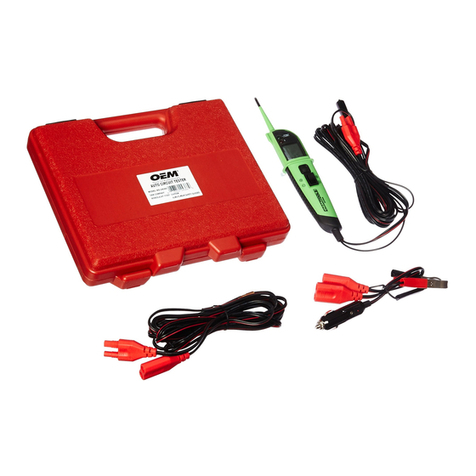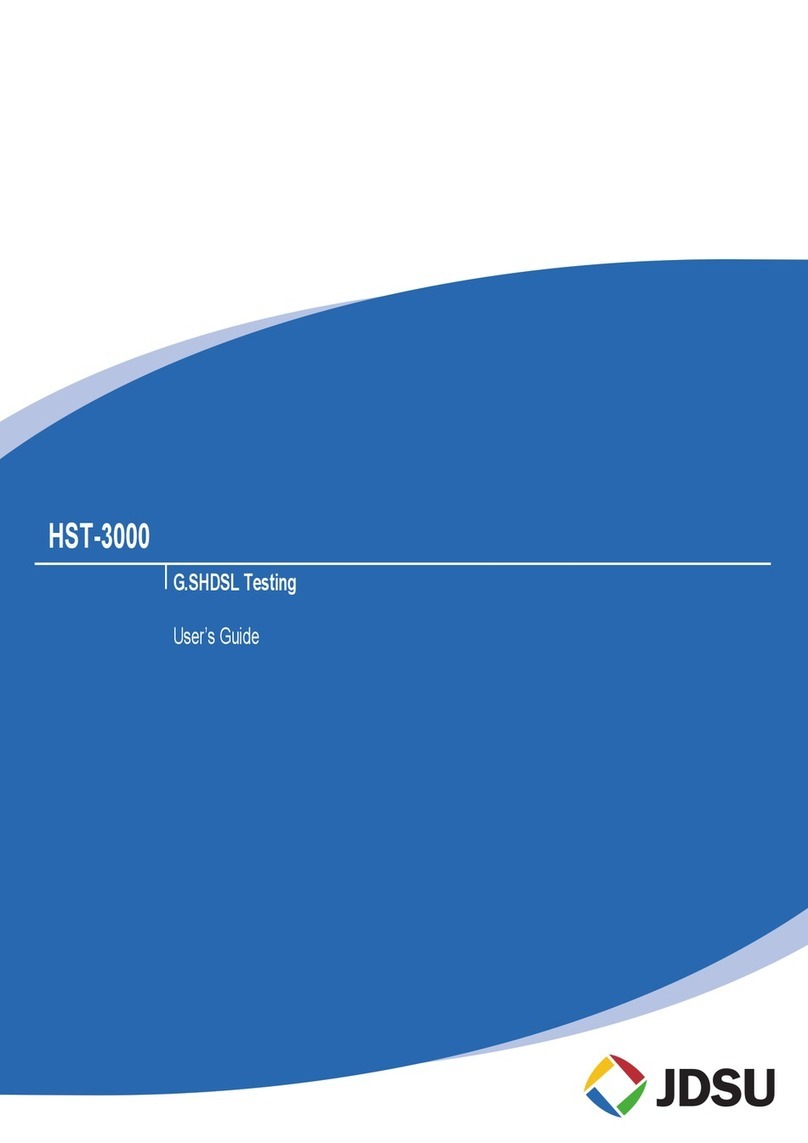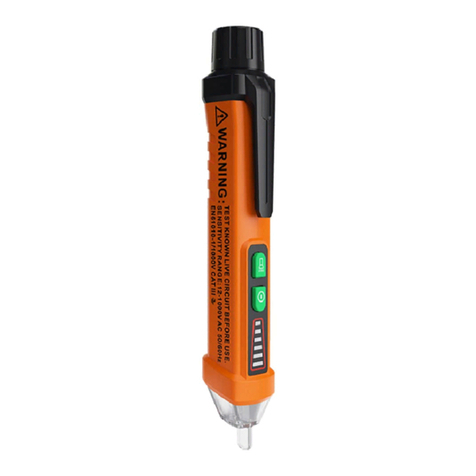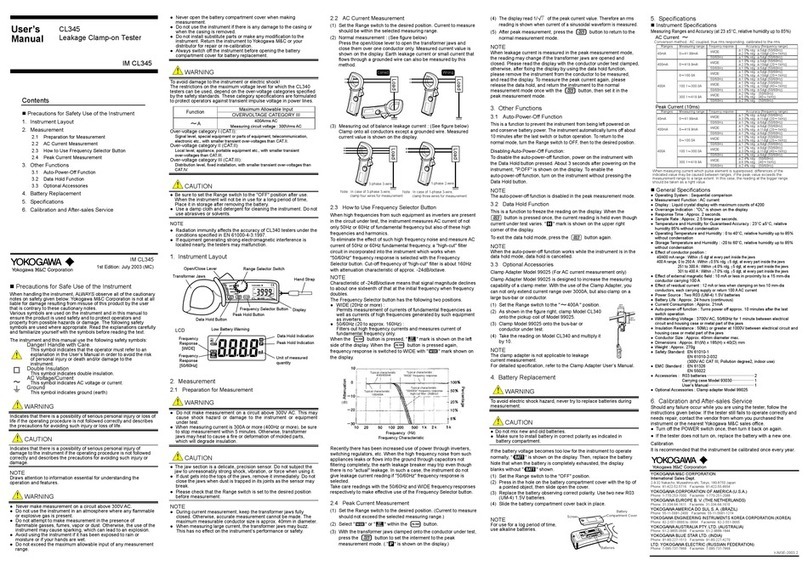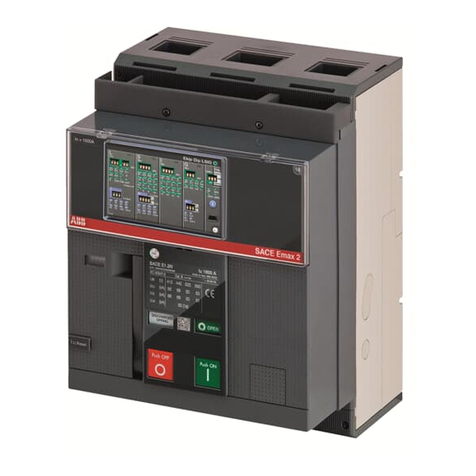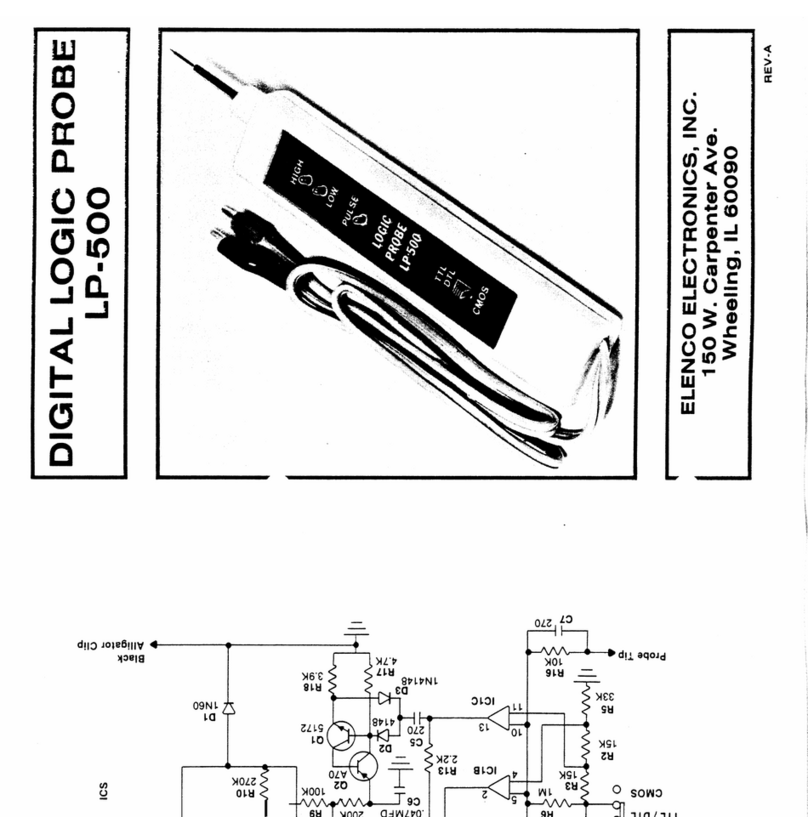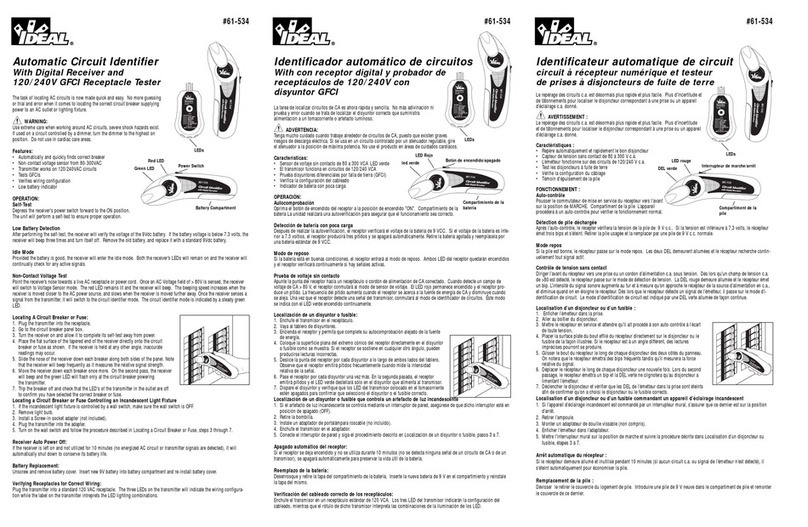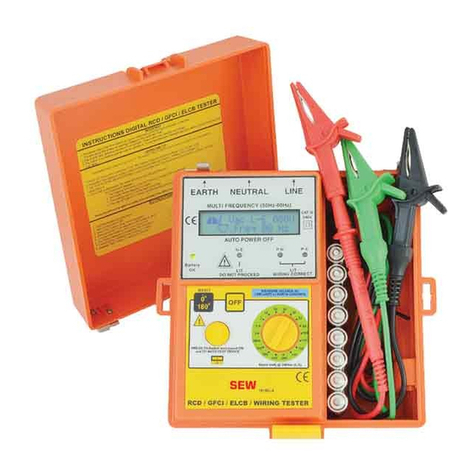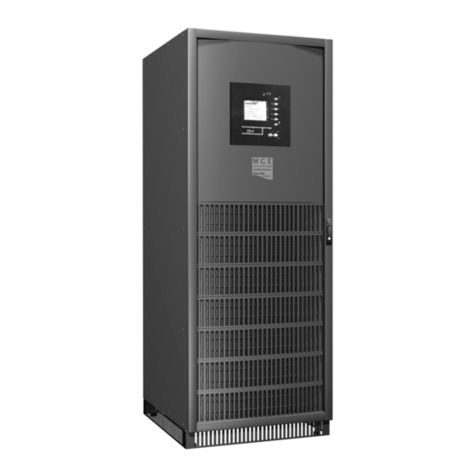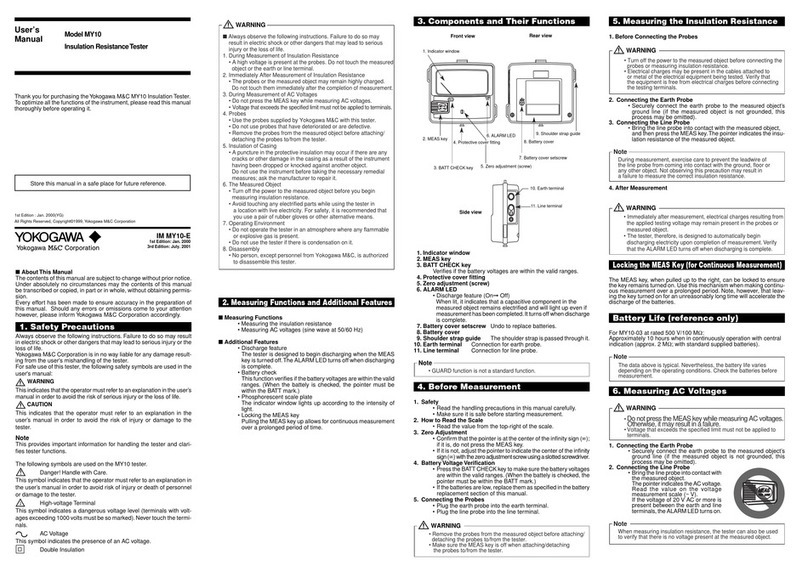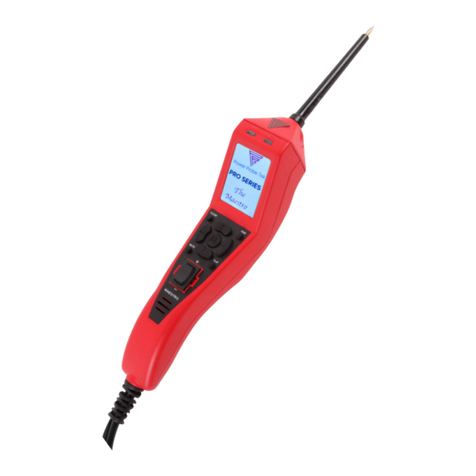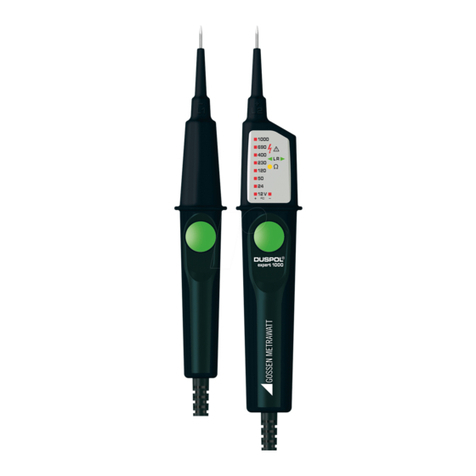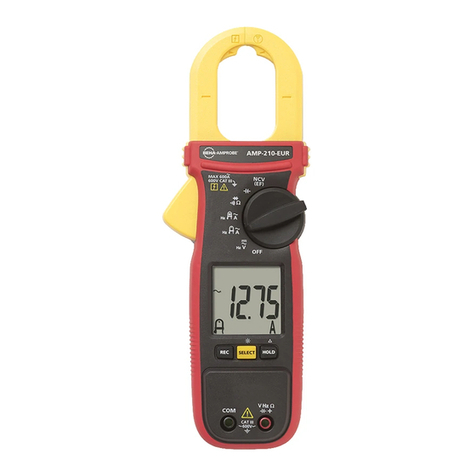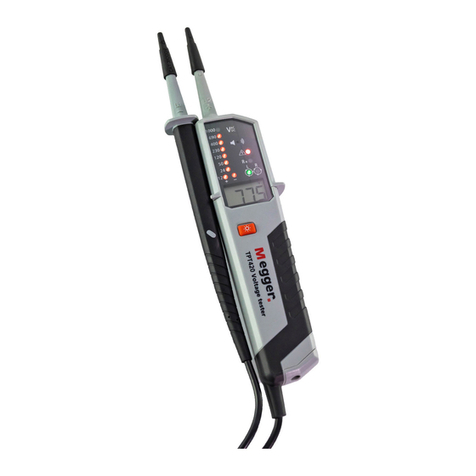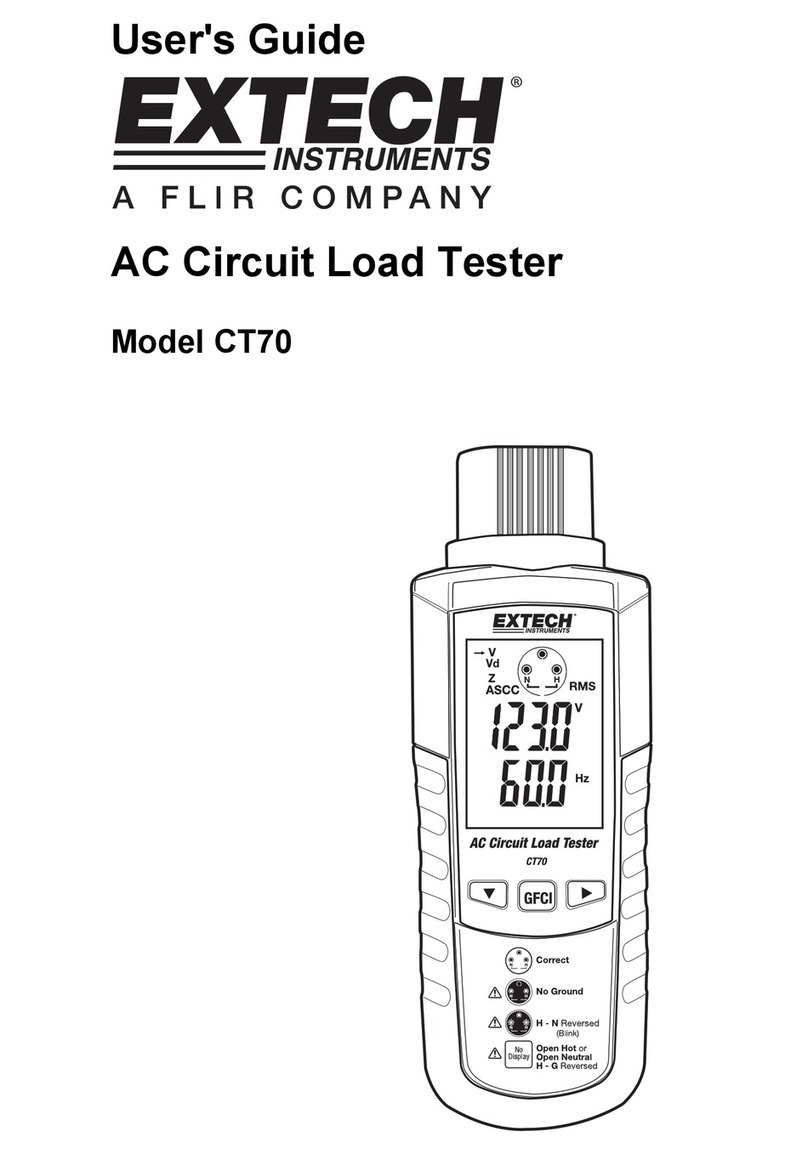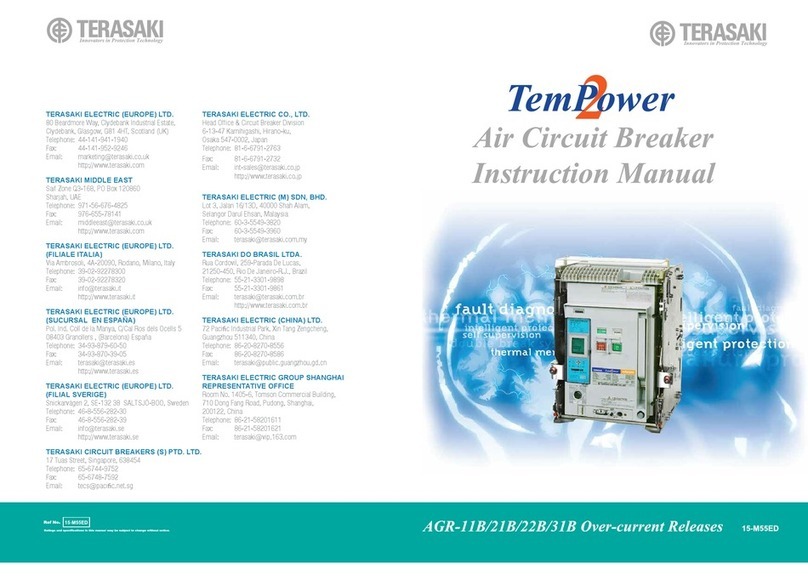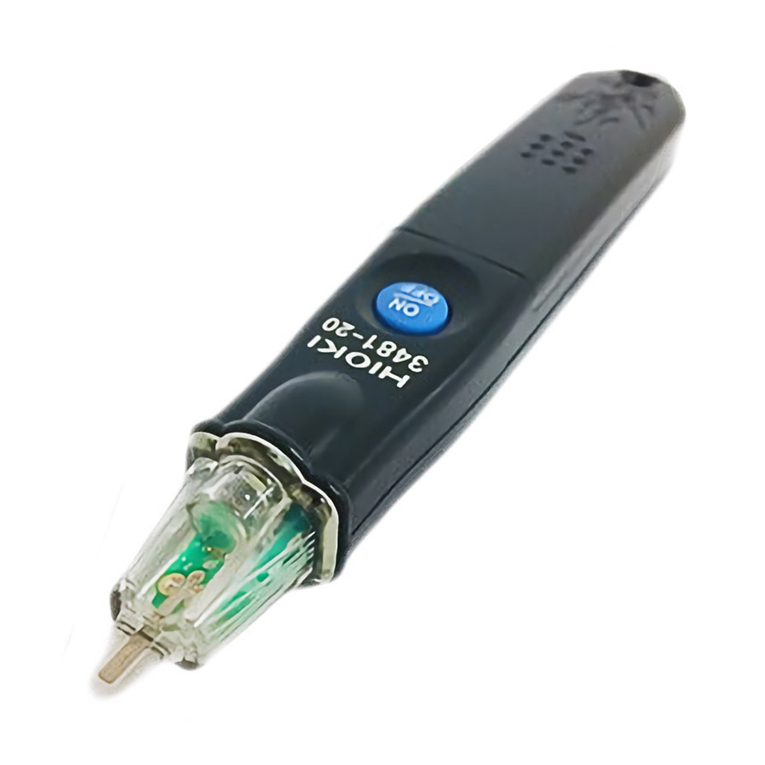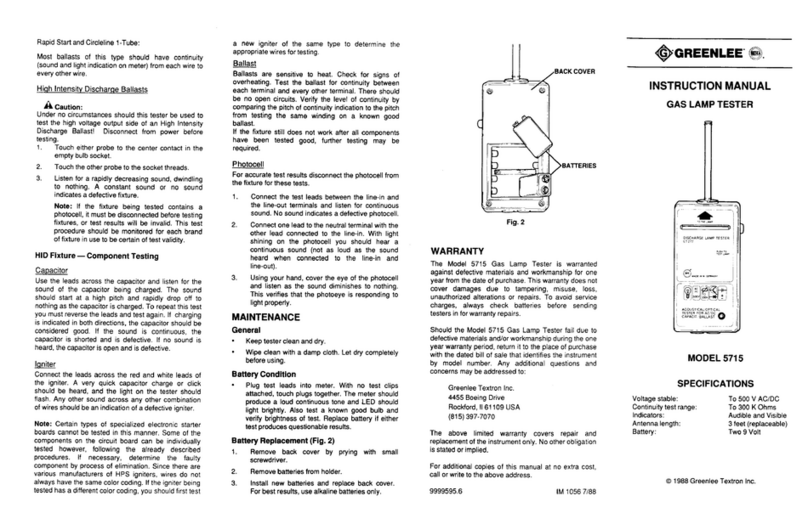3.4.5. Follow the wire or check it at different points, starting from the Sender and moving towards the load (accessory, light etc) observing the
positioning of the probe as indicated above. Continue this procedure while the audio signal (beeping sound) indicates the integrity of
the circuit. If beeping stops, it indicates that the probe has passed beyond the open, break or bad connection in the circuit.
3.4.6. Double check by positioning the probe before and after the suspected place. If the open circuit point has been found, the audio
indicator will show circuit integrity on one side and not the other.
3.4.7. At this point, where the audio signal stops, you have found the open circuit.
3.5. Wire identification.
NOTE ! For connection refer to hook-up options. Wiring can be identified by following the hook up procedures for short and open
circuits, depending on the particular configuration of the circuit.
3.5.1. For identifying wires with load connected, connect sender as described in section Locating Short Circuit to the circuit to be identified,
then proceed to scan all suspected wiring with the receiver’s probe until the beeping is at its maximum. In the case of tightly packed
wires (bundles, conduits etc) it may be necessary to spread these apart to facilitate the identification process of a particular wire.
3.5.2. For identifying wires without load connected. Connect sender as described in section Locating Open Circuit to the circuit to be
identified. Proceed to scan all suspected wiring with the receiver’s probe until the beeping is at its maximum, in the case of tightly
packed wires (bundles, conduits etc) it may be necessary to spread these apart to facilitate the identification process of a particular
wire.
3.6. Special tracing procedures.
3.6.1. In all cases, first set the receiver at the lower sensitivity level and increase it as necessary. Proceed as indicated in the sections of this
user’s manual applicable to your situation. After locating probable fault area, always verify several points in the wires on both sides of
the suspected fault. This procedure helps avoid confusing signal loss with actual trouble point.
3.7. Wire bundles and conduits.
3.7.1. Special care should be taken in the case of tracing a wire inside a bundle or conduit when there is a split. In this case it may be
possible to follow the wrong branch for a short distance and still receive a positive audio indication.
3.7.2. The probe may be picking up the signal from the other nearby branch (the one with the wire actually being traced). To avoid following
the wrong path, the branches should be swept, while maintaining the probe outside the apex area between the split as shown in fig.2.
Careful attention should be paid to the beeping of the tracer unit indicator, as it provides the necessary feedback to evaluate the
proximity of the wire being traced.
3.8. To increase the pickup range when tracing wires.
3.8.1. When tracing or identifying wires connected to a lightly loaded circuit (low currents), pickup range is reduced significantly. A possible
solution is, after connecting the sender in series with the circuit to trace, to replace the load (light bulb, module etc) with a direct
connection to ground. This allows the sender to inject a more powerful signal that is easier to detect.
3.8.2. For cases in which it is suspected the layout of the wires is the cause of a difficult pickup or weak signal, a dramatic increase of the
range can be accomplished by spreading the circuit. This is achieved by means of connecting a jumper wire between the sender’s live
wire and a ground point (fig.3) somewhere else on the vehicle. This last method should be used only as a last resort and with the
receiver set to low sensitivity, as it may make pinpointing of the precise location more difficult due to the much increased range.
3.8.3. Always verify that the sender is connected in series with the circuit being tested, as this confirms a proper connection and will limit the
amount of current flowing in the circuit.
3.9. Circuits with multiple loads or branches. (fig.4)
3.9.1. When tracing circuits connected to, or powering multiple loads and/or branches, and when these circuits are active or live, the bulk of
the current injected into the circuit by the sender will be directed to the short circuited branch of the circuit. However smaller amounts
of current (or stray current) will flow elsewhere making the tracing procedure confusing or even misleading.
3.9.2. The simplest and most effective way to deal with these cases is to disconnect or remove all loads from the circuit being traced (i.e
remove the light bulbs in fig.4).
g.2
g.3
FF400 | Issue 2 10/04/17
Original Language Version
© Jack Sealey Limited
